Times are tough for British consumers and many are turning to their food bills to make vital savings. But while families may be willing to spend less on their weekly shopping, they don’t appear to be scrimping on the family pet’s menu.
Mintel research from October 2008 found that: “There is no question that pets are on the whole viewed as one of the family. Clearly, consumers have an option as to whether to buy into the premium end of the market, but some may feel they are not caring well enough for their pets if they don’t do this.”
This is good news for the market as in all there are now 27 million pets in the UK and some 11.2 million households now have a pet – a little under half the population.
Mintel estimates that spending on petfood and petcare combined has risen by a fifth between 2003 and 2008, which even allowing for inflation is a robust performance. In 2008, the market was estimated to be worth just short of £3bn.
Research by Mars Petcare backs this up with figures illustrating that the category is showing good resistance to the recession. Out of 282 categories within grocery, petcare value growth is ranked 104 – better than more than 60% of categories. So while mineral water is down 8.5%, petcare has shown growth of 5.9%.
Nestlé Purina customer development director Andrew Harding says pet food tends to be less affected by a downturn in the economy for a number of reasons. “First, pets tend to be quite fussy, therefore if you change the food they don’t necessarily like that change and people end up wasting money. And, ultimately, the amount of money spent on pet food is quite small in terms of the overall family budget. The things that go first are the holidays, followed by takeaways and then the personal items. People are prepared to make a sacrifice themselves, but aren’t prepared to make their pet suffer as part of the economic downturn.”
loyal followers
Harding says one of the interesting elements of the petcare category is that it has a very high frequency with people tending to buy on average every 10 days. He says: “It is a great opportunity for convenience stores as many people don’t go to their big supermarket every 10 days and there are very few people who carry a month’s-worth of pet food in the house because it is so bulky. And if you are on your way home from work and have run out of pet food you don’t necessarily want to go to the big supermarket.”
But what do you stock to make the most of this? The petcare market is still dominated by dog and cat food and while there is plenty of choice of products in the category, ranging from the megabrands to smaller manufacturers such as OrganiPets, these are in the minority compared with the multi-nationals.
Batley’s has 18 dedicated pet product cash and carry warehouses throughout the UK. Operations director Martin Race says it’s essential that retailers are well stocked with a selection of the leading varieties.
“Pet owners are very loyal and once they have a brand that their dog or cat will eat they will stick to that brand. That’s why retailers need to make sure they stock the market leaders and have enough stock on the shelves.”
Nestlé Purina’s Harding agrees. “Clearly, on smaller fixtures you can’t stock everything so you need to make some choices about how to keep most of the people satisfied most of the time. We spend a lot of time looking at that analytically to makes sure that retailers stock the optimal range to maximise their sales. By doing this we find it is not uncommon for people to double their sales.”
But the complaint from manufacturers is that convenience retailers aren’t keeping pace with innovation in the market. Harding says: “One of the key problems that we tend to see on an ongoing basis is that the ranges they stock reflect the market three or four years ago and not the market at this time. Therefore, stocking the right range would be the biggest change to bring benefit.”
Batley’s Race agrees. He says: “It’s always been a very strong sector for us, but it should be growing faster because people don’t realise the opportunity there is.
“Many independent retailers are stuck in a time warp in which there is a choice of either Pedigree Chum or Whiskas cans. But the market has moved significantly towards pouches, pricemarked packs and treats.”
Pet owners may be loyal to their brands, but packaging innovation has dramatically shaped the market over the past 10 years. Although TNS results show that 60% of dog owners still opt for cans, the pouch – introduced by Mars in 2000 – changed the industry for ever. Single-serving packs allow pet owners, particularly those of cats, to avoid storing opened cans between feeds, and make it easier to regulate a pet’s diet.
As such, cat food pouch sales in the convenience sector are now worth 49% of the total independent convenience cat food market.
However, convenience retailers appear to be lagging behind in the trend towards multipacks. In pouches, 59% of sales are multipacks, but this compares with the major multiples at 84%.
Wayne Tessier, trading director for the convenience channel at Mars Petcare, says: “It’s important to replicate in a c-store the products that the consumer would expect to purchase on their big shop in the multiples – and therefore by stocking a multipack you cannot only satisfy the consumer’s need for choice, but the retailer will also increase the average weight of purchase.”
Little extras
According to Mintel, gift buying is now an entrenched part of pet ownership and pet owners are highly responsive to impulse. It says: “New product development is bringing new items to the market that pet owners of previous generations lived without; indeed, may never have known they wanted.”
The average dog treat buyer now pays out £36.57 a year on snacks, says TNS, up £3.71 on last year, while cat treat buyers spend £13.24, an increase of £1.83 (TNS 52 weeks ending August 10, 2008).
Nestlé Purina has identified four key occasions for treating: ‘every day’ for products such as biscuits; ‘health’ for products aimed at issues such as dental; ‘pure’ for really indulgent treats; and ‘occupying’, where owners are looking to keep their dog entertained while they do something else.
Harding says: “There are different types of treats for each of those different areas and when you look in people’s cupboards at home they may well have each of those products.”
At the end of last year Nestlé Purina launched Bakers Happy Walks, which come in a plastic dispenser so people don’t have to have treats loose in their pockets. On the treat side Mars Petcare recommends stocking Pedigree Mini Jumbone, Pedigree Schmackos Duo and DentaStix Small.
But although there is a wide range of pet treats on the market, space is usually at a premium. As such, Mars Petcare offers clip-strips, which encourage impulse purchasing but don’t take up space on the fixture and can hang anywhere.
Other new product development over the past few years has included ‘lifestyle’ and ‘lifestage’ and age-specific products, which have been backed up by sizeable advertising spend. The February 2008 launch of Whiskas Oh so Senior was supported by a combination of the £7m integrated marketing campaign for Whiskas Oh So and by the £1m Whiskas Senior marketing spend. In the same month Purina One Natural Balance was launched and backed by a £2.5m marketing campaign.
Harding says there does appear to be a connection between trends in pet food mirroring those for humans. He says: “If we look at something like health, for instance, we are starting to see specific diets including food for older pets or for indoor cats. More and more we are developing diets which allow people to meet the needs of their pets in the best possible way.”
But most of the new launches have been more about the evolution of the ranges rather than individual breakthroughs. This includes a new feeding concept called Bakers Gravy Bite – a dry food to which you add water to create gravy, but which “still retains all the integrity of a dry food in terms of its crunch”.
Pet rescue
Although current figures show pet owners are still willing to spend money on their animals, the deepening recession could impact the buying of new pets. Over the past few months dog charities have been reporting an unprecedented number of stray animals in the wake of the recession.
According to Cranswick Pet Products, supplier of products for small pets, animal-lovers in ever-increasing numbers are turning to smaller ‘easy to look after’ pets as the recession bites. The company says the week before Christmas was its busiest ever.
But marketing co-ordinator Suzi Sibthorpe says the trend towards quality still applies with small pets and customers are drawn to premium-look packaging.
She says, “Our new Nature’s Feast Small Animal range, with mixes for rabbits, guinea pigs, and hamsters, mice and gerbils, has been designed following extensive market research and consequently the products really stand out in store.”
With the petcare market bucking the trend and showing no signs of slowing, and pet owners still driven to premium products, it may be time to reassess the importance of our pampered pets.
Mintel research from October 2008 found that: “There is no question that pets are on the whole viewed as one of the family. Clearly, consumers have an option as to whether to buy into the premium end of the market, but some may feel they are not caring well enough for their pets if they don’t do this.”
This is good news for the market as in all there are now 27 million pets in the UK and some 11.2 million households now have a pet – a little under half the population.
Mintel estimates that spending on petfood and petcare combined has risen by a fifth between 2003 and 2008, which even allowing for inflation is a robust performance. In 2008, the market was estimated to be worth just short of £3bn.
Research by Mars Petcare backs this up with figures illustrating that the category is showing good resistance to the recession. Out of 282 categories within grocery, petcare value growth is ranked 104 – better than more than 60% of categories. So while mineral water is down 8.5%, petcare has shown growth of 5.9%.
Nestlé Purina customer development director Andrew Harding says pet food tends to be less affected by a downturn in the economy for a number of reasons. “First, pets tend to be quite fussy, therefore if you change the food they don’t necessarily like that change and people end up wasting money. And, ultimately, the amount of money spent on pet food is quite small in terms of the overall family budget. The things that go first are the holidays, followed by takeaways and then the personal items. People are prepared to make a sacrifice themselves, but aren’t prepared to make their pet suffer as part of the economic downturn.”
loyal followers
Harding says one of the interesting elements of the petcare category is that it has a very high frequency with people tending to buy on average every 10 days. He says: “It is a great opportunity for convenience stores as many people don’t go to their big supermarket every 10 days and there are very few people who carry a month’s-worth of pet food in the house because it is so bulky. And if you are on your way home from work and have run out of pet food you don’t necessarily want to go to the big supermarket.”
But what do you stock to make the most of this? The petcare market is still dominated by dog and cat food and while there is plenty of choice of products in the category, ranging from the megabrands to smaller manufacturers such as OrganiPets, these are in the minority compared with the multi-nationals.
Batley’s has 18 dedicated pet product cash and carry warehouses throughout the UK. Operations director Martin Race says it’s essential that retailers are well stocked with a selection of the leading varieties.
“Pet owners are very loyal and once they have a brand that their dog or cat will eat they will stick to that brand. That’s why retailers need to make sure they stock the market leaders and have enough stock on the shelves.”
Nestlé Purina’s Harding agrees. “Clearly, on smaller fixtures you can’t stock everything so you need to make some choices about how to keep most of the people satisfied most of the time. We spend a lot of time looking at that analytically to makes sure that retailers stock the optimal range to maximise their sales. By doing this we find it is not uncommon for people to double their sales.”
But the complaint from manufacturers is that convenience retailers aren’t keeping pace with innovation in the market. Harding says: “One of the key problems that we tend to see on an ongoing basis is that the ranges they stock reflect the market three or four years ago and not the market at this time. Therefore, stocking the right range would be the biggest change to bring benefit.”
Batley’s Race agrees. He says: “It’s always been a very strong sector for us, but it should be growing faster because people don’t realise the opportunity there is.
“Many independent retailers are stuck in a time warp in which there is a choice of either Pedigree Chum or Whiskas cans. But the market has moved significantly towards pouches, pricemarked packs and treats.”
Pet owners may be loyal to their brands, but packaging innovation has dramatically shaped the market over the past 10 years. Although TNS results show that 60% of dog owners still opt for cans, the pouch – introduced by Mars in 2000 – changed the industry for ever. Single-serving packs allow pet owners, particularly those of cats, to avoid storing opened cans between feeds, and make it easier to regulate a pet’s diet.
As such, cat food pouch sales in the convenience sector are now worth 49% of the total independent convenience cat food market.
However, convenience retailers appear to be lagging behind in the trend towards multipacks. In pouches, 59% of sales are multipacks, but this compares with the major multiples at 84%.
Wayne Tessier, trading director for the convenience channel at Mars Petcare, says: “It’s important to replicate in a c-store the products that the consumer would expect to purchase on their big shop in the multiples – and therefore by stocking a multipack you cannot only satisfy the consumer’s need for choice, but the retailer will also increase the average weight of purchase.”
Little extras
According to Mintel, gift buying is now an entrenched part of pet ownership and pet owners are highly responsive to impulse. It says: “New product development is bringing new items to the market that pet owners of previous generations lived without; indeed, may never have known they wanted.”
The average dog treat buyer now pays out £36.57 a year on snacks, says TNS, up £3.71 on last year, while cat treat buyers spend £13.24, an increase of £1.83 (TNS 52 weeks ending August 10, 2008).
Nestlé Purina has identified four key occasions for treating: ‘every day’ for products such as biscuits; ‘health’ for products aimed at issues such as dental; ‘pure’ for really indulgent treats; and ‘occupying’, where owners are looking to keep their dog entertained while they do something else.
Harding says: “There are different types of treats for each of those different areas and when you look in people’s cupboards at home they may well have each of those products.”
At the end of last year Nestlé Purina launched Bakers Happy Walks, which come in a plastic dispenser so people don’t have to have treats loose in their pockets. On the treat side Mars Petcare recommends stocking Pedigree Mini Jumbone, Pedigree Schmackos Duo and DentaStix Small.
But although there is a wide range of pet treats on the market, space is usually at a premium. As such, Mars Petcare offers clip-strips, which encourage impulse purchasing but don’t take up space on the fixture and can hang anywhere.
Other new product development over the past few years has included ‘lifestyle’ and ‘lifestage’ and age-specific products, which have been backed up by sizeable advertising spend. The February 2008 launch of Whiskas Oh so Senior was supported by a combination of the £7m integrated marketing campaign for Whiskas Oh So and by the £1m Whiskas Senior marketing spend. In the same month Purina One Natural Balance was launched and backed by a £2.5m marketing campaign.
Harding says there does appear to be a connection between trends in pet food mirroring those for humans. He says: “If we look at something like health, for instance, we are starting to see specific diets including food for older pets or for indoor cats. More and more we are developing diets which allow people to meet the needs of their pets in the best possible way.”
But most of the new launches have been more about the evolution of the ranges rather than individual breakthroughs. This includes a new feeding concept called Bakers Gravy Bite – a dry food to which you add water to create gravy, but which “still retains all the integrity of a dry food in terms of its crunch”.
Pet rescue
Although current figures show pet owners are still willing to spend money on their animals, the deepening recession could impact the buying of new pets. Over the past few months dog charities have been reporting an unprecedented number of stray animals in the wake of the recession.
According to Cranswick Pet Products, supplier of products for small pets, animal-lovers in ever-increasing numbers are turning to smaller ‘easy to look after’ pets as the recession bites. The company says the week before Christmas was its busiest ever.
But marketing co-ordinator Suzi Sibthorpe says the trend towards quality still applies with small pets and customers are drawn to premium-look packaging.
She says, “Our new Nature’s Feast Small Animal range, with mixes for rabbits, guinea pigs, and hamsters, mice and gerbils, has been designed following extensive market research and consequently the products really stand out in store.”
With the petcare market bucking the trend and showing no signs of slowing, and pet owners still driven to premium products, it may be time to reassess the importance of our pampered pets.
Top 10 brands
1. Whiskas
2. Felix
3. Pedigree
4. Bakers
5. Butchers
6. Iams
7. Go-Cat
8. Winalot
9. Gourmet
10. Kit-e-kat
Source: TNS 52 w/e August 2008
1. Whiskas
2. Felix
3. Pedigree
4. Bakers
5. Butchers
6. Iams
7. Go-Cat
8. Winalot
9. Gourmet
10. Kit-e-kat
Source: TNS 52 w/e August 2008






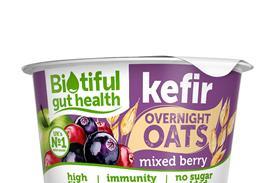


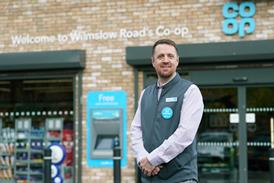






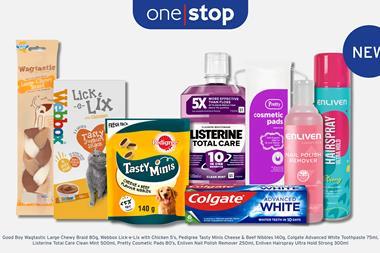
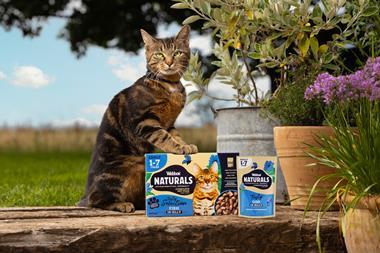
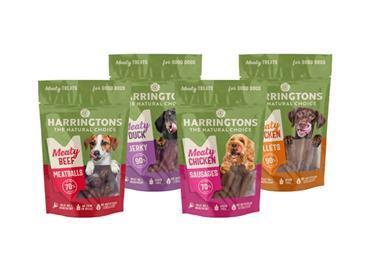
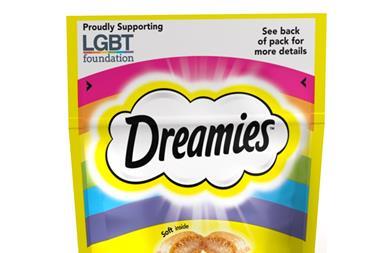
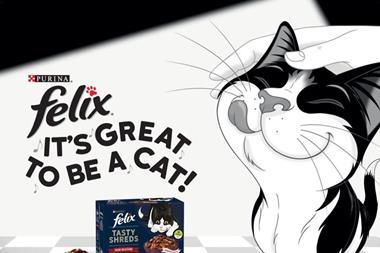
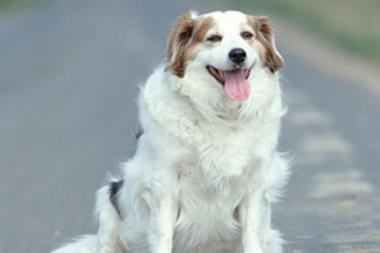


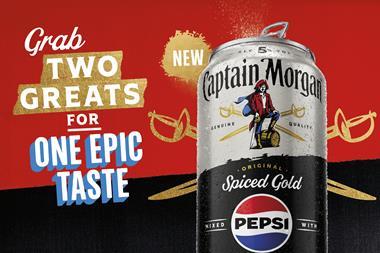

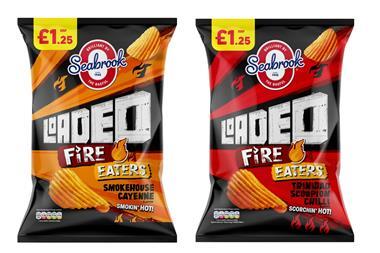
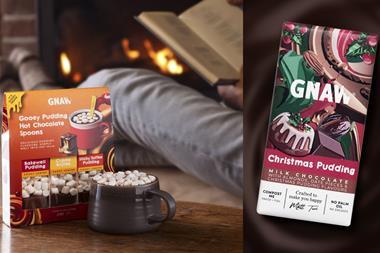
No comments yet